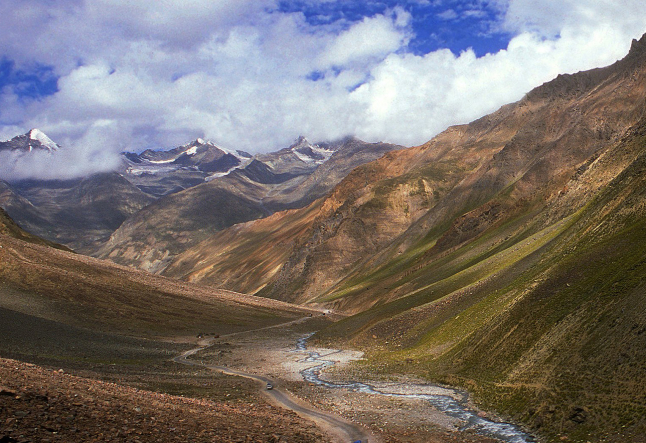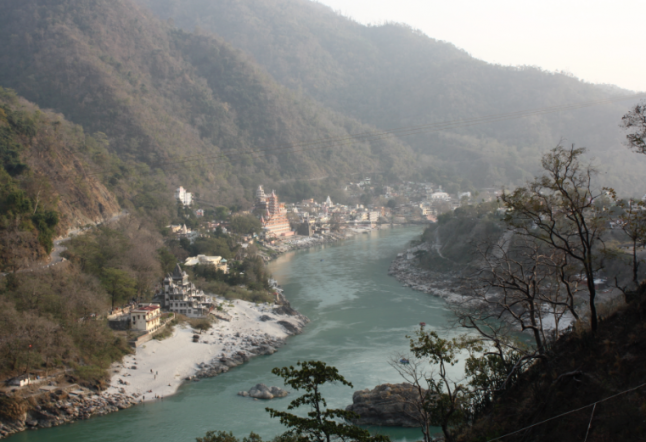The nature-loving Indian Yogis

Seeking Yoga wisdom with Indian Yogis in nature
The yoga teachers we have in the West can be brilliant, amazing, and inspirational; there is much to learn from them.
However, a massive part of yoga wisdom remains beyond our reach. This is due mainly to the fact that it stays in India with traditional yogis and sadhus (monks).
The essence of Yogis in India
I studied for many years under Western teachers, but always had a yearning for the deeper, hidden sides of yoga. I found myself in India for the third time in 1997, living at the Ved Niketan Ashram in Rishikesh, Uttarakhand, nestled in the foothills of the Himalayan Mountains.
Known as the “Yoga Capital of India,” Rishikesh is home to many Indian yogis and sadhus. It’s a vibrant center for Indian pilgrims and Western seekers alike, all drawn to its holy atmosphere and yoga wisdom.
Like many others, I was in India seeking the wisdom of yoga at its source. Ashram life initially seemed like the path: living in a spartan cement cell, eating plain food, helping with chores, and practicing yoga twice daily.
The environment was designed to remove distractions like television and other comforts, focusing the mind on spiritual practice.
Beyond ashram life: discovering the real Indian Yogis
However, after weeks in the ashram, I felt unfulfilled.
A yearning for deeper teachings persisted, and it seemed that the swamis at the ashram were somewhat disengaged. Perhaps years of hosting Westerners had dulled their enthusiasm, and the spiritual connection I sought was elusive.
This dissatisfaction led me to discover what a true yogi in India is like.
Most traditional yogis do not live in ashrams because of the rigid rules. Instead, they choose a life of freedom in the forests, rivers, and mountains.
These nature-loving yogis live simply, often wandering from place to place, immersing themselves in the elements.
Meeting these yogis was transformative. Unlike the Western image of yoga with mats, blocks, and bolsters, these Indian yogis live wild, untamed lives, often hard to find and even harder to converse with.
Yet, they embody the ancient wisdom of India, a wisdom deeply intertwined with the natural world.
A day in the life of a traditional Indian Yogi
The traditional Indian yogis are an extraordinary group. They wander through nature, visiting temples, caves, and rivers.
Foraging for food or fasting, sleeping under the stars or in caves, their lives are dictated by nature’s whims. In summer, many retreat to the high Himalayan mountains, living above the tree line, enduring extremes of cold and heat.
This arduous lifestyle connects them deeply with Shiva, the ultimate yogi and lord of the mountains.
They believe such proximity to nature and divinity brings immense power and wisdom.
The prana, or life-force, derived from this harmony with nature is central to their practice, offering profound health and personal strength.
What is a Yogi in India?
A yogi in India is not simply someone who practices asana or meditation; they are seekers of a deeper truth, immersed in nature’s timeless wisdom.
Their connection to the earth, rivers, mountains, sun, and moon grants them a serenity and power that is hard to describe but palpable when you meet them.
Unlike the structured yoga practices familiar to us in the West, these yogis rarely use mats or engage in asana routines. Instead, their yoga is a living practice, intertwined with the rhythms of the natural world.
Lessons from the nature-loving Indian Yogis
After leaving the ashram, I ventured high into the Himalayas, seeking these yogis. What I experienced there is beyond words, but their way of life left an indelible mark on me.
For those of us unable to wander the forests like these yogis, there is still much we can learn. Spending time in nature can transform our practice and our lives.
Take your yoga mat to a park or forest, breathe deeply, and soak up the natural prana. Sleep under the stars when you can, and visit places with clean air and water.
Even a brief connection with nature can provide the peace and vitality that these yogis in India cherish.
The wisdom of the natural world is freely available to all of us—it only requires our presence and attention to receive it.




